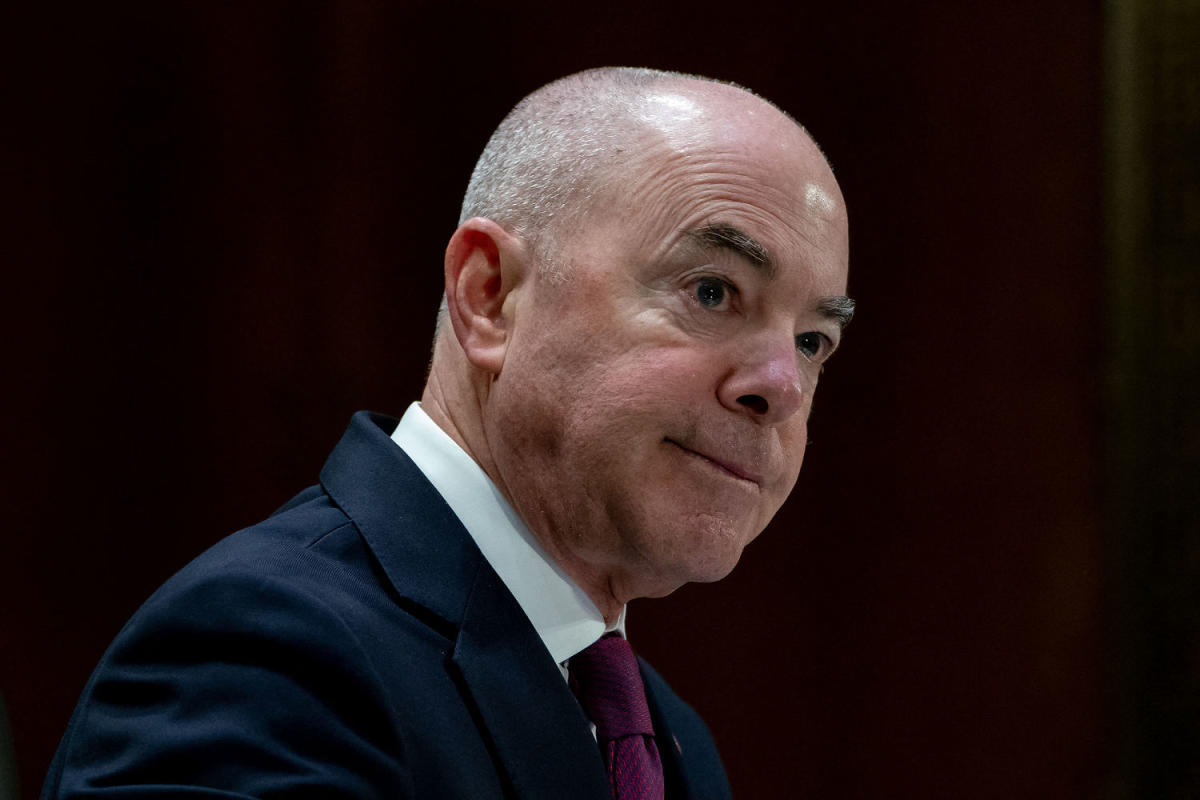WASHINGTON — House Republicans are moving forward with plans to impeach Homeland Security Secretary Alejandro Mayorkas, with a committee vote set for Tuesday morning and Speaker Mike Johnson promising a full vote of the House soon after.
If the House does impeach Mayorkas, requiring just a majority vote, the issue would head to the Senate to begin a trial. It would be only the second impeachment ever of a Cabinet secretary and the first since 1876.
While it has been 148 years since the last successful impeachment of a Cabinet member, there have been several failed attempts in that time. Opening an impeachment investigation into a Cabinet member of the opposing party has become especially common in the past two decades.
The only successful Cabinet impeachment so far
On March 2, 1876, Rep. Hiester Clymer, D-Pa., rose to speak on the House floor. Clymer, who chaired the Committee on Expenditures in the War Department, said his panel had uncovered “official corruption and crimes such as has no parallel in our own history, or, so far as I know, that of any other country.”
The man at fault, said Clymer, was William Belknap, who was war secretary in President Ulysses S. Grant’s administration. This was the Gilded Age, and Belknap was known for “extravagant Washington parties,” which raised questions, seeing as he was on a government salary.
The source of Belknap’s wealth was a kickback scheme orchestrated by his first wife, in which she helped businessman Caleb Marsh get an appointment to a trading post in Oklahoma. The man in that job, John Evans, struck a deal with Marsh — Evans would get to keep his lucrative job, but he’d provide $12,000 annually in payments, split evenly between Marsh and the Belknaps.
Clymer’s committee had Marsh on the record explaining the situation. After he entered evidence into the record, Clymer moved for a vote on impeachment. But there was a catch. Just hours earlier, Belknap had raced to the White House and begged Grant to accept his resignation, which the president did.
After a floor debate over whether the House could impeach an official who had resigned, the House ended up doing just that by voting unanimously to impeach Belknap. “THE DISGRACED SECRETARY,” read the New York Times headline the following day.
The Senate trial began in April and featured testimony from 40 witnesses. While a majority of senators voted against Belknap on all five articles, the Senate didn’t reach the two-thirds threshold necessary for conviction on any of them.
An increasingly popular move
There were a handful of unsuccessful attempts to impeach Cabinet secretaries during the first half of the 20th century, including in 1922, when a resolution to impeach Attorney General Harry M. Daugherty was referred to the Judiciary Committee. Daugherty was accused of failing to prosecute people involved in the Teapot Dome Scandal and for conducting himself in a “manner arbitrary, oppressive, unjust, and illegal.” The committee examined the charges but said that from the “evidence obtained it does not appear that there is any ground” to impeach Daugherty.
Another attempt to impeach a Cabinet secretary came in 1932, when Rep. Wright Patman, D-Texas, moved to impeach Treasury Secretary Andrew Mellon for retaining his ownership of shipping vessels while he was in public office. With pressure mounting, Mellon ended up resigning and accepting a new appointment from President Herbert Hoover to be ambassador to Great Britain. The Judiciary Committee decided to discontinue its impeachment investigation.
Frances Perkins, the labor secretary under President Franklin Roosevelt, faced impeachment in 1939 for “failing, neglecting, and refusing to enforce the immigration laws of the United States” by not deporting accused communist Harry Bridges. Perkins voluntarily testified to the Judiciary Committee, and the investigation was quietly ended. Rep. John Martin, D-Colo., was frustrated that Perkins’ innocence wasn’t better publicized. He took to the House floor to complain that “after months of Nation-wide publicizing of unjust and unfounded charges against a public official, the final result is heralded by no blare of trumpets and is scarcely brought to the notice of the public.”
More recently, in the 21st century, several attorneys general have faced impeachment attempts that didn’t gain traction. Alberto Gonzales, President George W. Bush’s attorney general, faced scrutiny for the mass firings of federal prosecutors. Rep. Jay Inslee, D-Wash., introduced a resolution directing the Judiciary Committee to investigate whether there were sufficient grounds to impeach. Gonzales resigned before any action on the resolution was taken.
In 2013, a group of Republicans introduced impeachment articles against Eric Holder, President Barack Obama’s attorney general, for failing to enforce laws and refusing to comply with a congressional subpoena. The resolution was referred to the Judiciary Committee but didn’t lead to any hearings. William Barr, President Donald Trump’s attorney general, also faced an unsuccessful impeachment effort.
Most recently, Republicans have set their sights beyond just Mayorkas, with threats to impeach Defense Secretary Lloyd Austin after he failed to inform the White House of his hospitalization, as well as Attorney General Merrick Garland.
This article was originally published on NBCNews.com

Amanda Smith is a dedicated U.S. correspondent with a passion for uncovering the stories that shape the nation. With a background in political science, she provides in-depth analysis and insightful commentary on domestic affairs, ensuring readers are well-informed about the latest developments across the United States.







